Jeff Borysiewicz loves the feel and flavor of a good cigar. He relishes capping the end, making the first slow burn to ignite the aroma and then the hour-long conversation he might have with someone until the final ember goes dark. He also loves farming, running businesses and reclaiming history.
Borysiewicz (Bor-see-witz), born in Chicago, came to Florida in 1974, at age 6, when his father got tired of running a gas station and fixing cars in the bitter cold. His dad started an auto repair business and a teenage Borysiewicz learned the basics while he also became involved in Future Farmers of America (FFA) in high school. Before long, he was winning awards for his FFA work and became a certified automotive technician. In the 1990s, he left the family business at age 28 and started the Corona Cigar Company out of his house, financing the venture with credit cards.
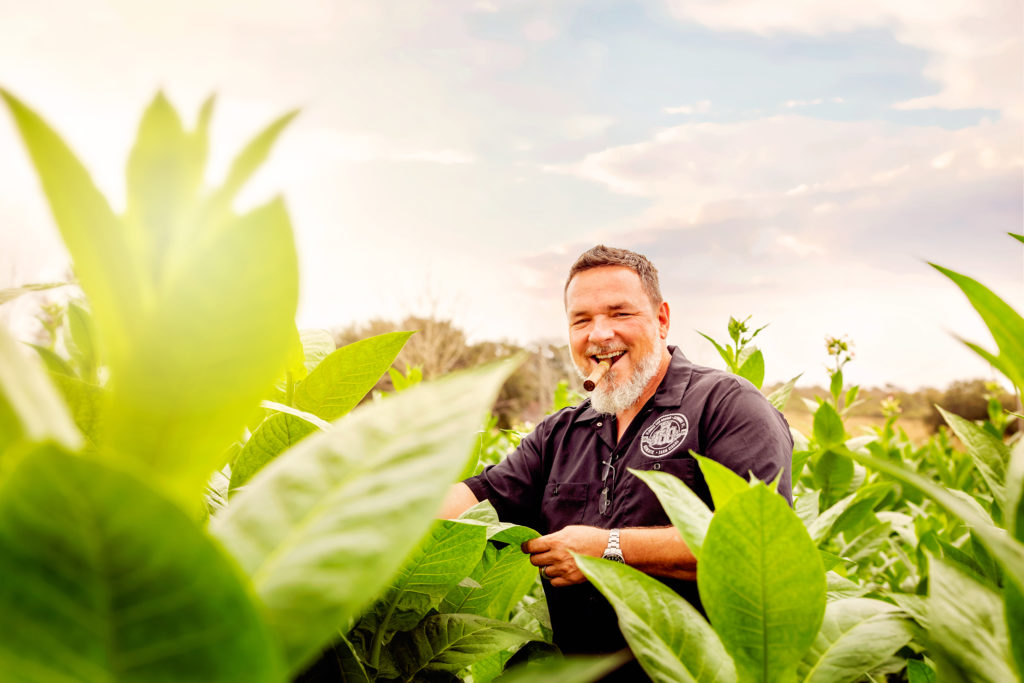
Now, Borysiewicz heads a company that sells cigars online around the globe and has four upscale retail locations in Orlando and Tampa, and he grows the dark, rich tobacco that gives a signature smoke to his beloved cigars. Through his 20-acre Florida Sun Grown tobacco farm near Clermont, founded in 2012, he is the only state grower of Cuban cigar tobacco, and one of few in the nation.
On his farm, each Corojo tobacco plant is gently nurtured from seeds from Cuba, by way of Nicaragua, that he brought home in an aspirin bottle. The ebony seeds are “as fine as pepper,” he offers, pouring a small amount into his beefy palm. “This is enough to plant probably 1,000 acres.”
He can plant a crop twice a year as his farm is “at 110 feet above sea level, which is exactly what it is where they grow the cigar tobacco in Cuba,” he explains.
There are big differences in cigar and cigarette tobacco, in how it is grown, harvested, processed and used. There still are cigarette tobacco growers in Florida, primarily to the north and in the Panhandle, but he says they are “stressed.”
“It is very, very expensive to grow anything in America,” Borysiewicz states. “And that’s why we’re the only cigar tobacco farm in Florida. The cigarette tobacco farmers in north Florida are having to compete on a global scale. Philip Morris buys it and doesn’t care if comes from Live Oak or Vietnam. And that’s why most of the cigar factories moved to Central America, Honduras, Nicaragua, the Dominican Republic, because the labor is cheaper.”
Cigar tobacco is still being grown in states such as Connecticut and Pennsylvania, he says, which is typically shade-grown, meaning under a cover. Shade-grown tobacco is light in color. Florida Sun Grown has a much darker leaf. Shade-grown is harvested by felling the entire plant. Florida Sun Grown is harvested one dark, broad leaf at a time.
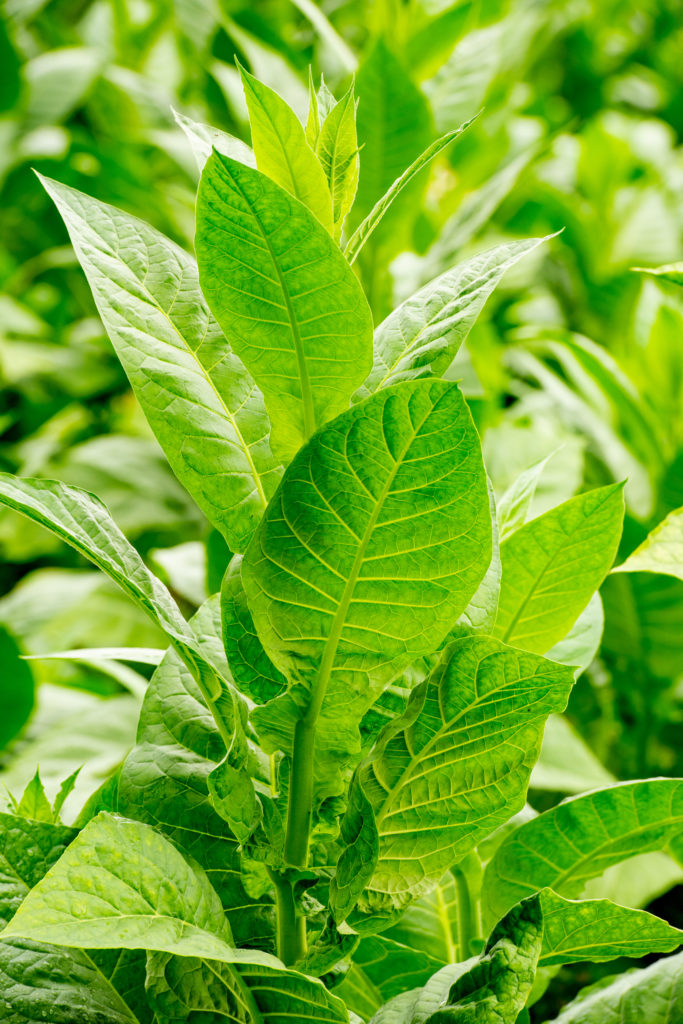 He displays three cigars, with wrappers (the outer layer) of Connecticut shade-grown, a Madero, and an American, which has a wrapper from his farm. In what might seem a sacrilege to some, Borysiewicz begins to unwrap the latter.
He displays three cigars, with wrappers (the outer layer) of Connecticut shade-grown, a Madero, and an American, which has a wrapper from his farm. In what might seem a sacrilege to some, Borysiewicz begins to unwrap the latter.
“It’s rolled in a spiral. That’s why this leaf on the outside has to be perfect,” he explains. “The next leaf is the binder. It cannot have any holes in it, but you see that spot, that’s OK. But if it was on the outside—you just can’t have that.”
Once Borysiewicz made up his mind to grow cigar tobacco, he planted Corojo and Criollo seeds. He used hired labor to try to “sew” the leaves manually so they could be air-dried on his farm. Both decisions caused him to soon rethink his plans and a conversation with a tobacco buyer led him to Connecticut, to growers who had been in the business much longer than he had, and that’s when he began to make some real headway.
Now, he plants only Corojo seeds and is using vintage machinery, and age-old wisdom, to produce his specialty crop.
The Process
When it’s time to plant, workers—sometimes including his wife and two sons, ages 14 and 11—mount a tractor-pulled planter and gently place individual seedlings into the ground.
Pointing at a huge plastic bin on the planting device, Borysiewicz says, “This is filled with water and fertilizer. So that’s gonna fill the hole with water and you just stick it in and give it a little squeeze, put a little dirt on it. And you do that 55,000 times.”
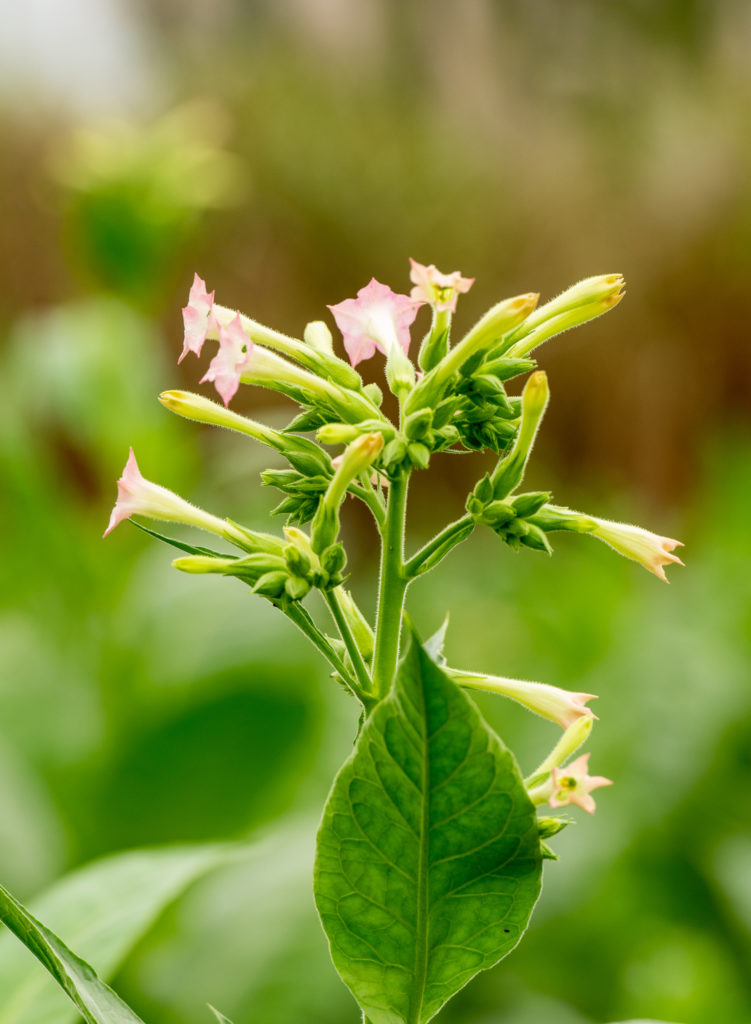 Weeks later, the towering tobacco plants begin to put out light pink flowers. These have to go, so the plant’s energy can be focused into making broad, dark leaves.
Weeks later, the towering tobacco plants begin to put out light pink flowers. These have to go, so the plant’s energy can be focused into making broad, dark leaves.
Workers walk each lengthy row and “top” the plant or break off the flowers. They also pinch off the “suckers,” or smaller leaves near the top, and apply a “suckercide” liquid that is drizzled down the stalk to kill the suckers farther down.
The tobacco is harvested over many days, taking the bottom leaves first and stripping the plant from the ground up. Inside the cavernous barn, the rich aroma of fresh and dried tobacco permeates the senses. The dirt floor is smooth and flat. And here is where the past meets the present in an unusual way.
In order to dry the tobacco, the leaves must be individually “sewn” onto sticks that are then spaced high and wide on a network of beams that soar up into the ceiling. Borysiewicz says the failed sewing attempt with his first crop actually contributed to his current success.
“The buyer from one of the largest companies—remember we’re in the cigar business, so we deal with all the makers—he says, ‘Jeff, come to Connecticut with me, I want to introduce you to someone,’” Borysiewicz recalls.
That connection, to a former shade-grown tobacco grower, led to Borysiewicz buying vintage 1950s-era tobacco sewing machines, with extra parts.
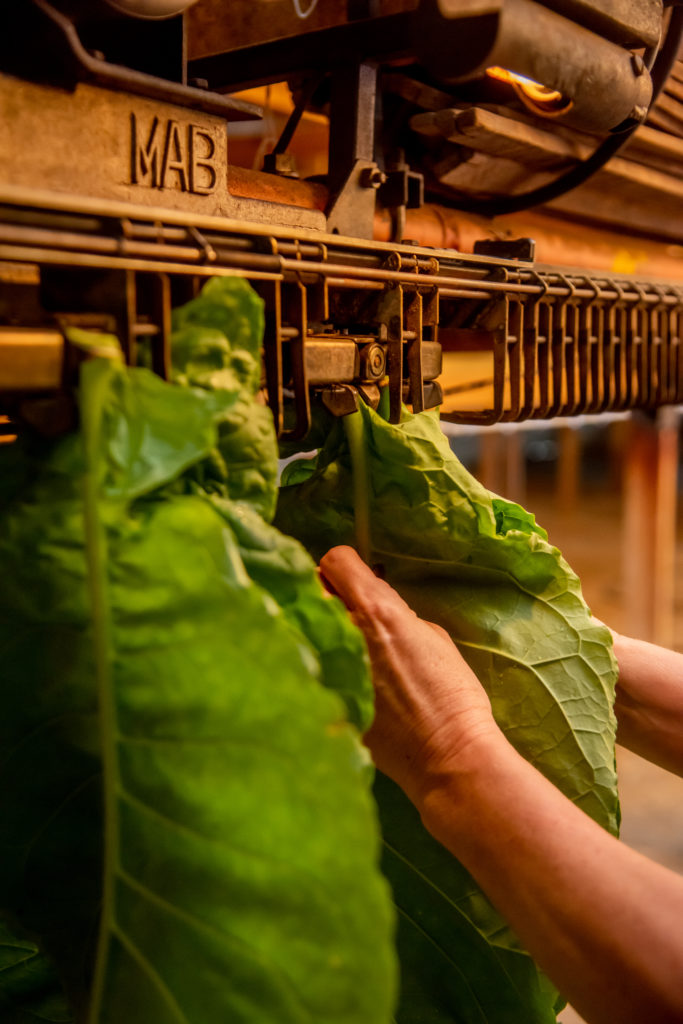 “The machines were still there,” he says. “We bought five and loaded them on a truck. He was happy. And that made a huge difference for us. Now we can sew tobacco like it should be and move it through. That was a learning curve.”
“The machines were still there,” he says. “We bought five and loaded them on a truck. He was happy. And that made a huge difference for us. Now we can sew tobacco like it should be and move it through. That was a learning curve.”
And, he adds, “If I wasn’t a mechanic from my previous career, there is no way I could do this because you have to fix all this stuff and it’s not like I can call up and say, ‘Hey, tobacco machine repair guy…’
“This is why the history is so important,” he continues. “One of those guys in Connecticut gave me a book from 1953 or ’54. He was old. He told me that everything in the book still works. He said, ‘Tobacco doesn’t know what year it is—1898 or 2000.’ If they successfully grew it 100 years ago—and these guys had no tools like we have, they didn’t have tractors or fertilizer—if they did it then, we can do it now.”
And, speaking of fertilizer, there is an Ocala connection to Borysiewicz’s success. He said when a friend from Cuba came to visit, he told him to use horse manure as a fertilizer.
“So, I looked it up, and because there are so many horses in Ocala, there’s a manure removal service,” he recalls. “I ordered three semi-truck loads. We have sandy soil, so you mix it in and it gives us organic material. When have our Barn Smoker (an annual social/business event at the farm), I tell visitors we have the most expensive fertilizer in the world because it’s coming out of million-dollar horses.”
The Product
So where do those broad, leathery tobacco leaves go after they leave Florida Sun Grown? Into cigars such as The American, made by the J.C. Newman Fourth Generation Cigar Company in Ybor City, and some of those produced by Davidoff, Drew Estate and Aganorsa Leaf.
The J.C. Newman Cigar Company was founded in Cleveland, Ohio in 1895 by Julius Caeser Newman. Today, the firm is headquartered in a 110-year-old factory in the Ybor City National Historic Landmark District in Tampa.
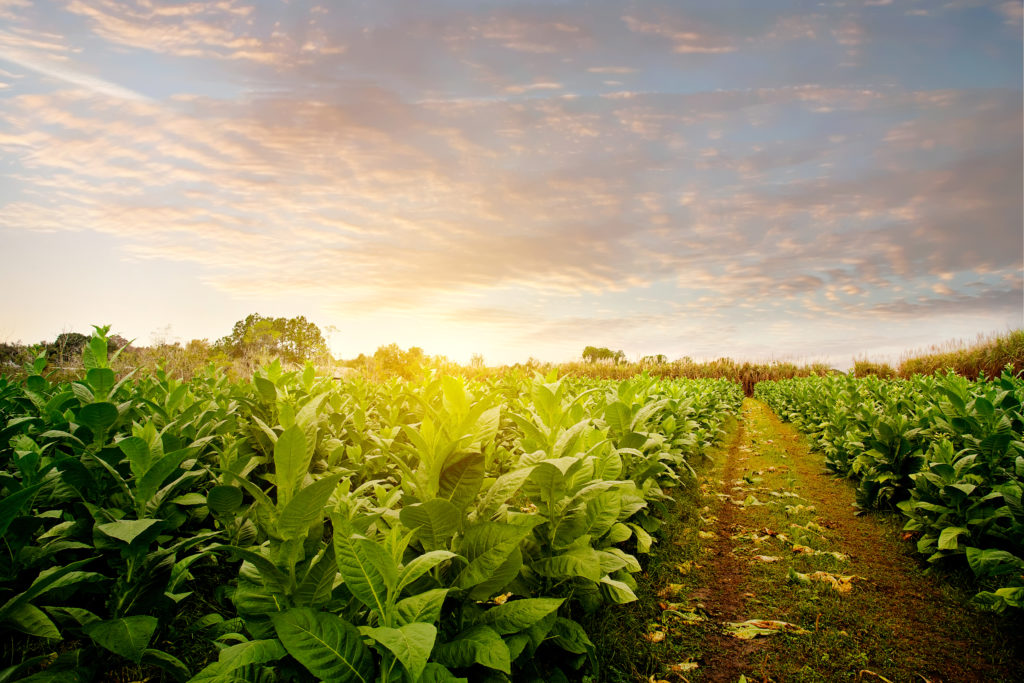 “Our relationship with Florida sun grown tobacco goes back to maybe 1960,” says Eric Newman, grandson of the founder. “We would get our tobacco from Cuba and there was a revolution and Castro takes over. A friend, a tobacco grower named Angel Oliva, born in Cuba, sold us a lot of tobacco. He came to my father and said, ‘We are going to grow Cuban tobacco in Quincy, in Florida. I need a cigar manufacturer to partner with me because I can’t grow tobacco on speculation.’”
“Our relationship with Florida sun grown tobacco goes back to maybe 1960,” says Eric Newman, grandson of the founder. “We would get our tobacco from Cuba and there was a revolution and Castro takes over. A friend, a tobacco grower named Angel Oliva, born in Cuba, sold us a lot of tobacco. He came to my father and said, ‘We are going to grow Cuban tobacco in Quincy, in Florida. I need a cigar manufacturer to partner with me because I can’t grow tobacco on speculation.’”
Newman says his father grudgingly said OK and Oliva grew about 50 acres.
“We took most of the tobacco on our own Rigoletto brand,” he notes. “Mr. Oliva started to show his tobacco to the other cigar manufacturers. They turned their noses up. About a year later, the embargo comes and that tobacco becomes like gold because they couldn’t get any more Cuban tobacco.”
Newman says that in the mid-1970s, after the federal government decided farmers should be covered under minimum wage law, Florida could no longer compete with less expensive labor in third world countries and much of the tobacco industry “went out of business.”
Newman says members of his family met Borysiewicz about 15 to 20 years ago.
“We’re in the business of making cigars; he’s in the business of selling cigars,” he offers. “He is a great customer, a very smart retailer.”
Newman says when Borysiewicz decided to grow tobacco, it was “from the heart.”
“He wanted to bring back sun grown tobacco in Florida, though it doesn’t make a lot of economic sense,” Newman notes. “But he did his homework, his due diligence. He just had a passion.”
At the same time, Newman states, his son Drew also had a vision, to make an American cigar. He says the ideas espoused by both men were “kooky.”
“The first cigar ever made in our factory, in 1910, was called The American. So, Drew said he wanted to make handmade cigars in our factory. 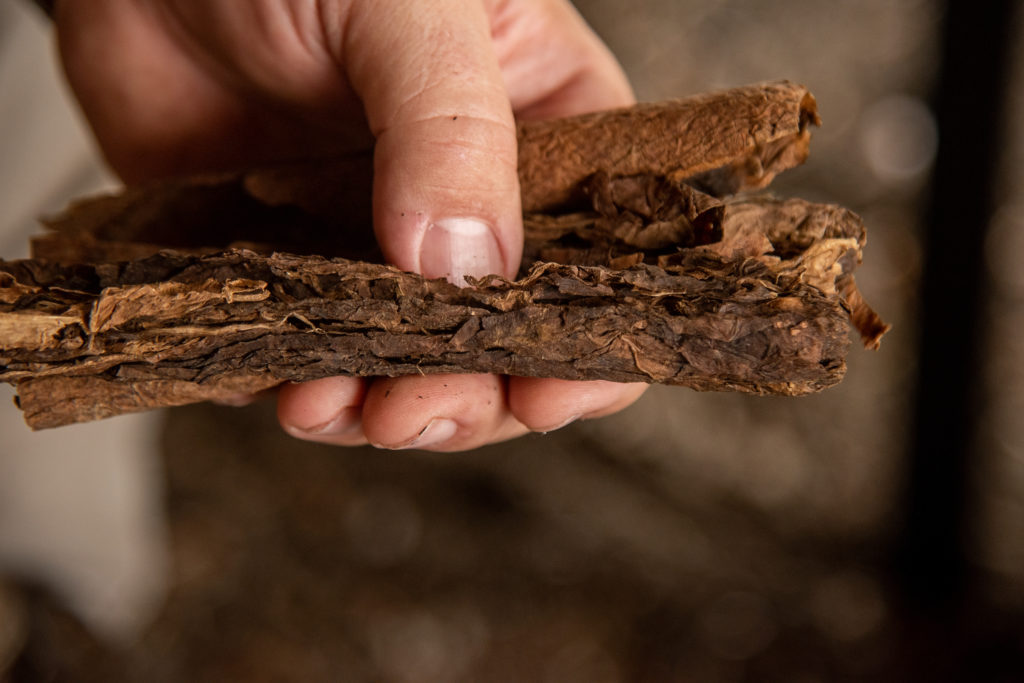 I said, ‘Drew, that’s not a very good idea because labor is eight times what it is in Nicaragua.’ He said, ‘Dad, I also want to make it a true American cigar. American wrapper. American binder. American Filler. American boxes. American bands. American labels.’ I said, ‘Drew, that’s an even worse idea. You can wait until your mother and I die and get your inheritance or you can get it now ‘cause you’re going to lose money.’
I said, ‘Drew, that’s not a very good idea because labor is eight times what it is in Nicaragua.’ He said, ‘Dad, I also want to make it a true American cigar. American wrapper. American binder. American Filler. American boxes. American bands. American labels.’ I said, ‘Drew, that’s an even worse idea. You can wait until your mother and I die and get your inheritance or you can get it now ‘cause you’re going to lose money.’
“Long story short,” Newman continues, “Jeff started to grow tobacco and he has filler and wrapper. The filler went to Drew Estates and we have the wrapper for our American. It’s got a unique flavor. It’s a wonderful story; it takes people back.
“The American is a very good cigar. We’re making them by hand,” he adds. “They sell for $16 to $20 apiece, which is expensive for a cigar, but it’s because we’re using American labor. We have two rollers who make 100 cigars a day. Most cigar makers are paying on a piecework basis around the world, meaning the more cigars you make, the money you make. We told our cigar makers, we want great cigars, just 100 cigars a day, but 100 of the best cigars.”
He says he has nothing but “total admiration” for Borysiewicz.
“It’s not easy being a tobacco farmer. You have risk. Wind storms, hail storms, hurricanes, plant stuff that destroys crops,” he remarks. “If anybody else owned his company, the first thing they’d do is shut his farm because it doesn’t make economic sense, but that’s who he is. It’s what makes him so unique as a person, as a retailer, as a farmer, as a visionary. He’s like an old cowboy. I think Jeff’s happiest day is when he is on a tractor.”
The Politics
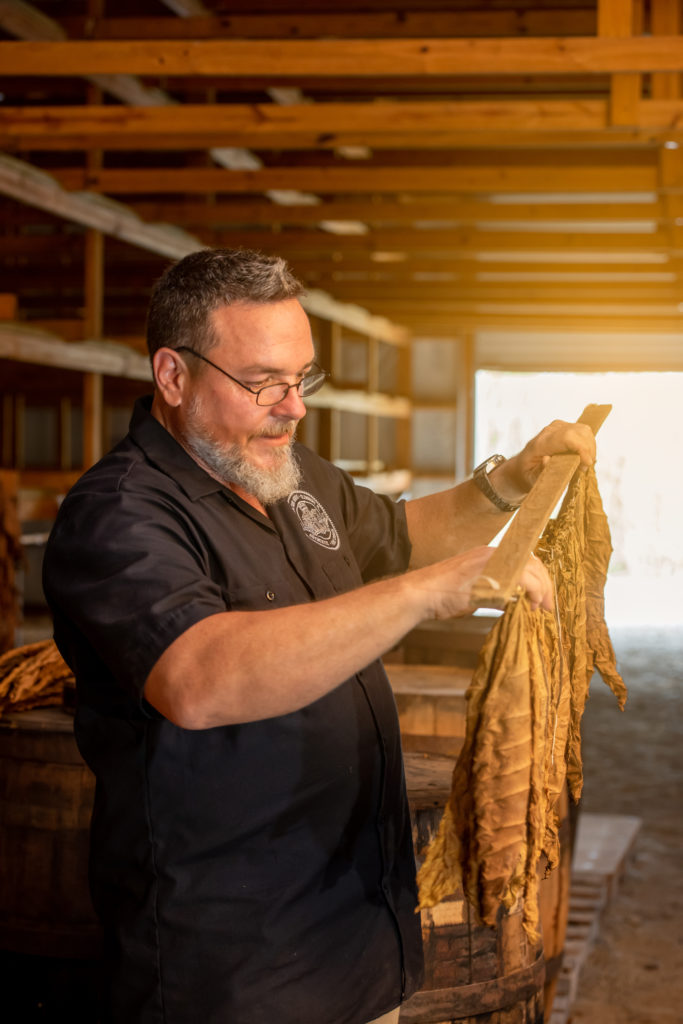 Among the additional challenges Borysiewicz has faced is the politics of smoking, which led him to become involved in groups such as Cigar Rights of America, the International Premium Cigar & Pipe Retailers Association, a number of chambers of commerce and the Florida Farm Bureau.
Among the additional challenges Borysiewicz has faced is the politics of smoking, which led him to become involved in groups such as Cigar Rights of America, the International Premium Cigar & Pipe Retailers Association, a number of chambers of commerce and the Florida Farm Bureau.
“In 2008-2009, we had some major problems in the cigar industry. We had a lot of anti-cigar bills coming through—big ones,” he explains. “There was a major tobacco tax and 99 percent of the funding comes from cigarettes, and that’s the primary target, but, in Washington, they throw a blanket over it. Because we weren’t represented, we got the worst end of the deal. Cigarette taxes went from .50 cents a pack to $1.01. Our cigar tax went from .5 cents to $10, or 725 percent. So that’s how I got involved in politics. We ended up going from .5 cents to .41 ½ cents, but that’s still a 125 percent increase.”
He said one question kept coming up—were there any cigar tobacco growers in Florida?
“And we’d say, well, there’s a couple of cigar factories left in Florida, but there’s not farms,” he asserts. “So, I thought, I love farming. If I can bring back cigar tobacco in Florida, we can make inroads. And, we can have a new ingredient to play with in blending cigars. We knew that in concept and theory, everything would work.”
Savoring the Smoke
Mike Rossignol, who owns the Roz Cigar Emporium in Ocala, grew up in the “tobacco valley” area of Connecticut, where he began picking tobacco as a young boy. He says one reason he has long been a fan of cigars is that they have distinct characteristics.
“When we moved here to Ocala about 15 years ago, there was no good place to get premium cigars,” he offers. “I’d have to go to Corona Cigar, Jeff’s place in Orlando, to find a good selection. That’s where the seed for my business was planted—if I had this issue in Ocala, there must be other people with the same issue.”
Roz Cigar Emporium opened in 2013. Rossignol carries more than 900 different cigars, as well as pipe tobacco and accessories. The venue includes a lounge that features leather couches and recliners, where patrons can enjoy a beer or glass of wine with their cigar.
“A cigar lasts a while. It is more of a commitment,” he explains, citing the difference between, for example, smoking a cigarette. “When you’re smoking your cigar, it’s very relaxing. And it’s usually a very social thing; it’s usually more than just one person.”
His cigars range in price from “about $2.50 all the way up to $40.”
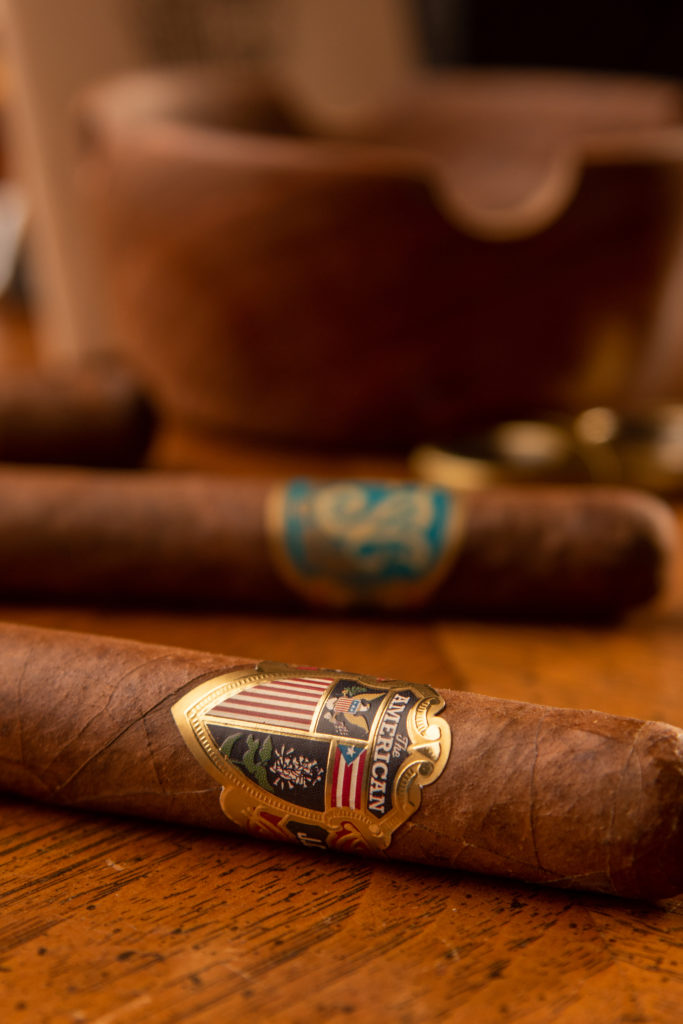 “Another way to look at cigars is like wine,” he offers. “You can buy a very inexpensive bottle of wine and it is what it is. Or you can buy more of a celebratory type of wine. Cigars have different flavor profiles, just like your reds and your whites, so you like to pair it up with whatever it is you are doing. The cigar I enjoy in the morning is not typically the cigar I enjoy in the evening. Each cigar has its own characteristics, otherwise, there would be just five cigars on the market.”
“Another way to look at cigars is like wine,” he offers. “You can buy a very inexpensive bottle of wine and it is what it is. Or you can buy more of a celebratory type of wine. Cigars have different flavor profiles, just like your reds and your whites, so you like to pair it up with whatever it is you are doing. The cigar I enjoy in the morning is not typically the cigar I enjoy in the evening. Each cigar has its own characteristics, otherwise, there would be just five cigars on the market.”
He says where and how cigar tobacco is grown can have an impact, as well as the fermentation process.
“Once tobacco is harvested, it usually takes at least two years before the product reaches a retailer’s shelf,” he states. “Tobacco has to be fermented, aged. And, after it’s rolled, it needs to rest for a minimum of at least six weeks before they can ship it out. From seed to store could be several years.”
He says his shop features beautiful antique cases and an atmosphere of sitting in your own living room. His clientele includes “a good portion of women, retirees, plumbers, CEOs of some of the larger companies in Ocala, a lot of people from the horse industry, doctors, it covers the whole gamut.”
He says he spends a lot of time there, along with an employee who is “very fluent in cigars,” going over the finer points of cigars with new and longtime clients.
“Especially for a first-time smoker, we ask a lot of questions,” he notes. “We don’t want to put someone on to a cigar maybe too strong for them. We try to match up the cigar with the individual.”
Borysiewicz offers another take on the socialization aspect of cigar smoking.
“We have really good college age guys that work for us. They smoke cigars with their dad, with their friends, they’re out of trouble,” Borysiewicz offers. “If you’re dropping your kid to go to University of Central Florida, you want them at the Corona Cigar bar. It’s a safe place for your young man. And we have a lot of diversity, especially the store in Tampa. My nephew was there—he loves sports—we had a guy from the Atlanta Hawks, we had basketball players there, he met the quarterback for the Bucs. It’s a different setting and when those guys are there, they’re just regular. You get to meet some cool people.
“Smoking a cigar should take an hour, an hour-and-a-half,” he insists. “And people can have such good conversations.”
Local Connection
Borysiewicz is well versed in the overall history of the tobacco industry, including its connection to Ocala.
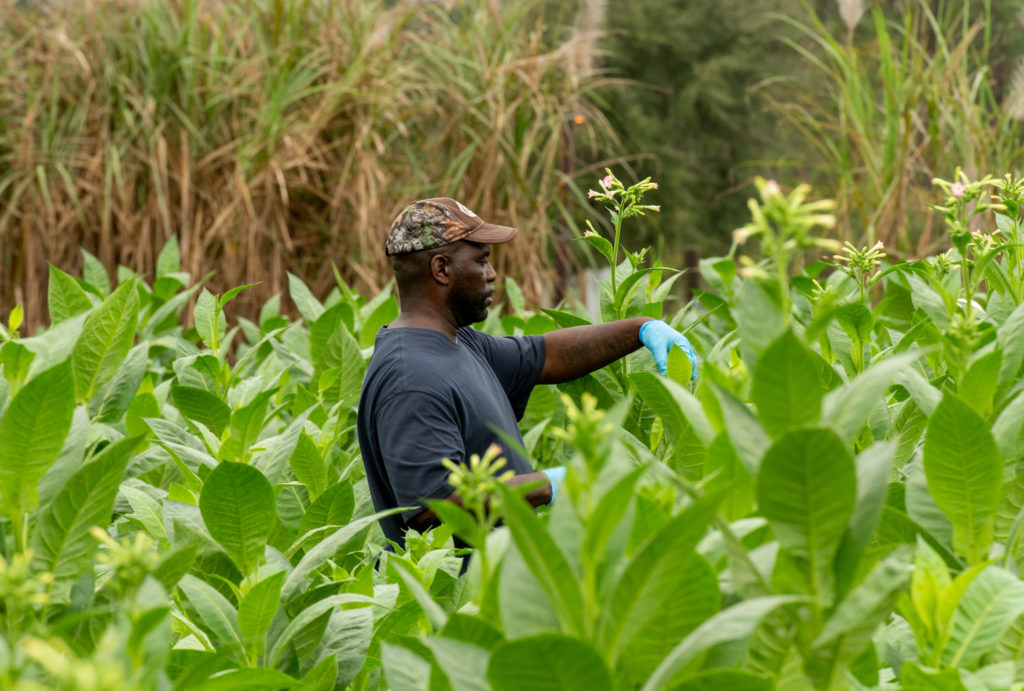 He says the tobacco industry was doing well in America in the early 1800s, with most of the cigar factories up north, in Pennsylvania, Ohio, and New York.
He says the tobacco industry was doing well in America in the early 1800s, with most of the cigar factories up north, in Pennsylvania, Ohio, and New York.
“They would get tobacco from Cuba, the islands of Sumatra, Indonesia, and a lot would come from Florida and Connecticut,” he notes. “Maryland grew it, Wisconsin grew it. There were a lot of states growing cigar tobacco.”
Fast forward to the late 1800s.
“You had the Spaniards and Cubans fighting and the revolution going on, the same way we had the American Revolution, the Cubans were like, we want to get rid of being a subject of Spain,” Borysiewicz says. “The Cuban Revolution was for the independence of Cuba from Spain. Now let’s say we live in Cuba and just want to live, not pick up rifles and get involved in war. So, what did a lot of them do? They went to Key West, then to Ybor City, and started farms and factories. And that’s how Marti City in Ocala came about.”
Marti City initially had five cigar factories, 100 dwellings, and a large Cuban population. Between 1889 and 1906, 13 cigar factories were located there.
Balancing the Blend
As Borysiewicz surveys his 8-acre stand of bright green tobacco, his black Labrador retriever, Cleo, emerges from a pond and shakes droplets from her sopping coat, which fall on his dust-covered boots like rain.
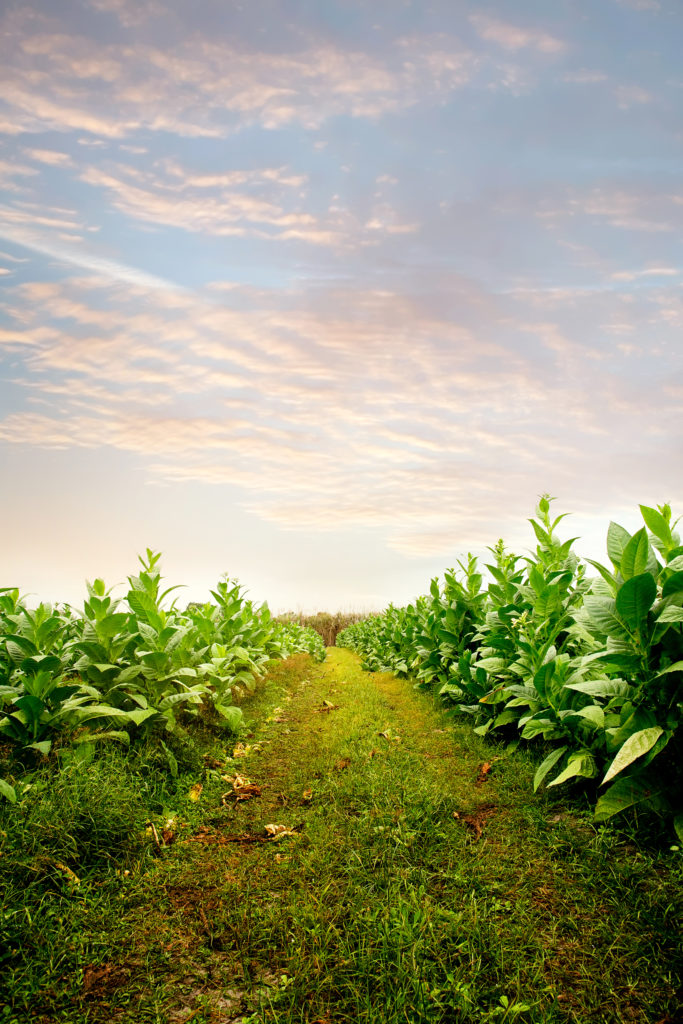 Chickens caw in the distance as he refills a container of suckercide for one of the workers.
Chickens caw in the distance as he refills a container of suckercide for one of the workers.
Taking a long, deep, draw on the hefty cigar clenched in his jaw, Borysiewicz offers that the best way to describe how a cigar is made is “sort of like making a sub sandwich. You’ve got your bread on the outside, then the flavor is your meat and cheese.”
Continuing that thought, he says one of the reasons he wanted to grow Cuban cigar tobacco in Florida included providing “a new ingredient to play with in blending cigars.”
“It’s like a chef who has chicken, duck, lobster, steak—and then I want to be the guy who brings in Wagyu or something different for him to play with.”
For more information about Ocala’s tobacco roots and Marti City, check out John Dunn’s historical account following this story.
To learn more, visit, www.floridasungrown.com, www.coronacigar.com and www.jcnewman.com.






